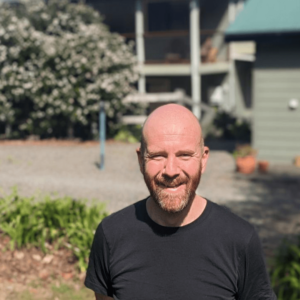Solar power is often a pipe dream for Australian renters. Although the grid-power alternative offers users a reduced carbon footprint and the chance to lower their energy bills, its permanent and expensive hardware is an investment landlords may not be willing to make for the sake of their tenants.
However, father-of-two Darren Burden’s success story proves that with a little know-how, renters can reap the rewards of solar energy.
After being hit with a nasty bill shock when moving to a new rental on the New South Wales south-coast, Mr Burden made the case for solar to his landlord – and slashed his power bills by 80% in the process.
“I’d never seen such a high bill. I’d gone from a small house in the city to a big house in the country with a pool and my bill went up $550 the first month,” Mr Burden said.
Advertisement
A quick analysis of his energy usage highlighted the property’s pool pump as the main energy draining culprit, which Mr Burden tried to maintain by switching its usage times to align with cheaper, off-peak times.
A month later he was devastated to find his bill practically unchanged.
Looking at a now $450 monthly bill and his home energy usage reducing tips exhausted, Mr Burden concluded there was only one option left on the table.
“I realised that the only way I was going to make a significant change was by getting solar on the house,” he said.
Mr Burden knew however, that he faced the obstacle of getting his landlord’s approval before installing solar panels on the property.
“So, I talked to people and did some research, found out some installers and got some quotes and then I went to the owner and I pitched it back to him and her,” Mr Burden said.
“I also offered to pay a bit extra rent because I would rather pay them extra rent than pay the power company.”
Mr Burden said his case was made by pitching a solar installation with all the costs and savings already calculated for the landlord, making it practically effortless for them.
“By the end of that the owners were very generous and were happy with what I did…They agreed to one of the quotes, so I got it installed and my bill next month, when running for a full month, went to $70.”

Darren Burden pictured outside his NSW south-coast rental property as his solar system is installed. Source: Supplied.
With 80% slashed from his power bills, a picturesque home in NSW’s Kangaroo Valley now equipped with 32 solar panels and a lavish pool primed for the summer that no longer chews through his monthly electricity costs, Mr Burden leaves this tidbit of advice for other Aussie renters who may feel trapped when it comes to accessing solar at their property.
“I made sure I had all the information on hand. The landlords didn’t have to do any research themselves, I’d kind of already given them the choice and I was prepared for them to say no,” he said. “But I made it so it was kind of an easy decision for them, they didn’t have to do any work, they just had to say yes, I agree or no I am not going to do it.
“Doing that bit of upfront research, getting quotes and stuff like that was useful.”
Already got solar installed? Check out these solar plans instead
Here are some of the cheapest solar-specific deals from the retailers on our database. These costs are based on the Ausgrid network in Sydney but prices will vary depending on your circumstances. We show one product per retailer, listed in order of lowest price first. Annual price estimates assume general energy usage of 3900kWh/year for a residential customer on a single rate tariff. Price estimates exclude solar feed-in tariff credits. These are products from referral partners†. Our database may not cover all deals in your area, and please check retailer websites for up to date information.
Here are some of the cheapest solar-specific deals from the retailers on our database. These costs are based on the Citipower network in Melbourne but prices will vary depending on your circumstances. We show one product per retailer, listed in order of lowest price first. Annual price estimates assume general energy usage of 4000kWh/year for a residential customer on a single rate tariff. Price estimates exclude solar feed-in tariff credits. These are products from referral partners†. Our database may not cover all deals in your area, and please check retailer websites for up to date information.
Here are some of the cheapest solar-specific deals from the retailers on our database. These costs are based on the Energex network in Brisbane but prices will vary depending on your circumstances. We show one product per retailer, listed in order of lowest price first. Annual price estimates assume general energy usage of 4600kWh/year for a residential customer on a single rate tariff. Price estimates exclude solar feed-in tariff credits. These are products from referral partners†. Our database may not cover all deals in your area, and please check retailer websites for up to date information.
Here are some of the cheapest solar-specific deals from the retailers on our database. These costs are based on SA Power network in Adelaide but prices will vary depending on your circumstances. We show one product per retailer, listed in order of lowest price first. Annual price estimates assume general energy usage of 4000kWh/year for a residential customer on a single rate tariff. Price estimates exclude solar feed-in tariff credits. These are products from referral partners†. Our database may not cover all deals in your area, and please check retailer websites for up to date information.
Want to follow the Burden family’s footsteps and ask your landlord for solar but unsure where to start? Stefan Jarnason, co-founder of Solar Analytics has some tips just for you

- Check if your roof is suitable for solar. “The first thing for you to do is have a look at your roof and just see if it gets sunlight,” Mr Jarnason said. “If it does, then great, doesn’t have to get it all day, doesn’t have to be north-facing, but you do need to look at it and judge whether it gets at least four to five hours of sun on a sunny day. If that’s the case, then you could be a good candidate.”
- Consider your relationship with your landlord. “If it is particularly fraught, then they’ll (the tenant) need to make up their own mind as to whether or not, just to save a few bucks, it is worth getting solar or if it will upset the apple cart. But assuming that it is pretty reasonable, it doesn’t hurt asking. Most landlords don’t actually realise that this is a good option for them.”
- Be ready for a discussion. “Best thing to do is to just contact them and say ‘hey, I was thinking of this, is that something you are open to?’. Then it is up to the tenant and the landlord to decide who wants to investigate it.”
- Do your homework using a bill estimator. “The first thing you can do is jump onto [Solar Analytics’] Solar Maximiser. It will be easier for the tenant because you’ll know your electricity bill but a landlord could do it with an estimate and it’ll show you roughly what size savings there will be available for you.”
- Tell your landlord about the benefits for them. “For the landlord, it’s been shown that properties with solar do rent for more and they appreciate more and obviously the cost of the system is also tax deductible.”
- Offer to pay extra rent if the system performs well. “There is one thing you could put in there that could alleviate concerns and that’s if you were to say that you’ll pay an extra $10 a week (rent) subject to the system generating a certain number of kilowatt hours (kWh) per month.”
According to Mr Jarnason, Solar Analytics customers with a 5kW or 6kW solar system installed managed to save $1,400 on average last year on their electricity costs.
A Canstar Blue survey conducted in December 2022 also found the average solar credit on quarterly electricity bills was $117 for households in Australia.
Mr Jarnason said households afraid they may not reap the rewards of asking their landlord for this installation need only to look at the savings of those already utilising solar energy every day.
“The best proof is in the fact that there are three and a half million Australians who put solar on their roof and basically all of them have saved a lot of money.
“As long as you get at least five to six hours of sunlight on your roof a day, on a sunny day, you will absolutely save money.”
After more solar tips while renting? Check out Canstar Blue’s solar for renters guide now to see your options.
Image credits: In the Media



Share this article